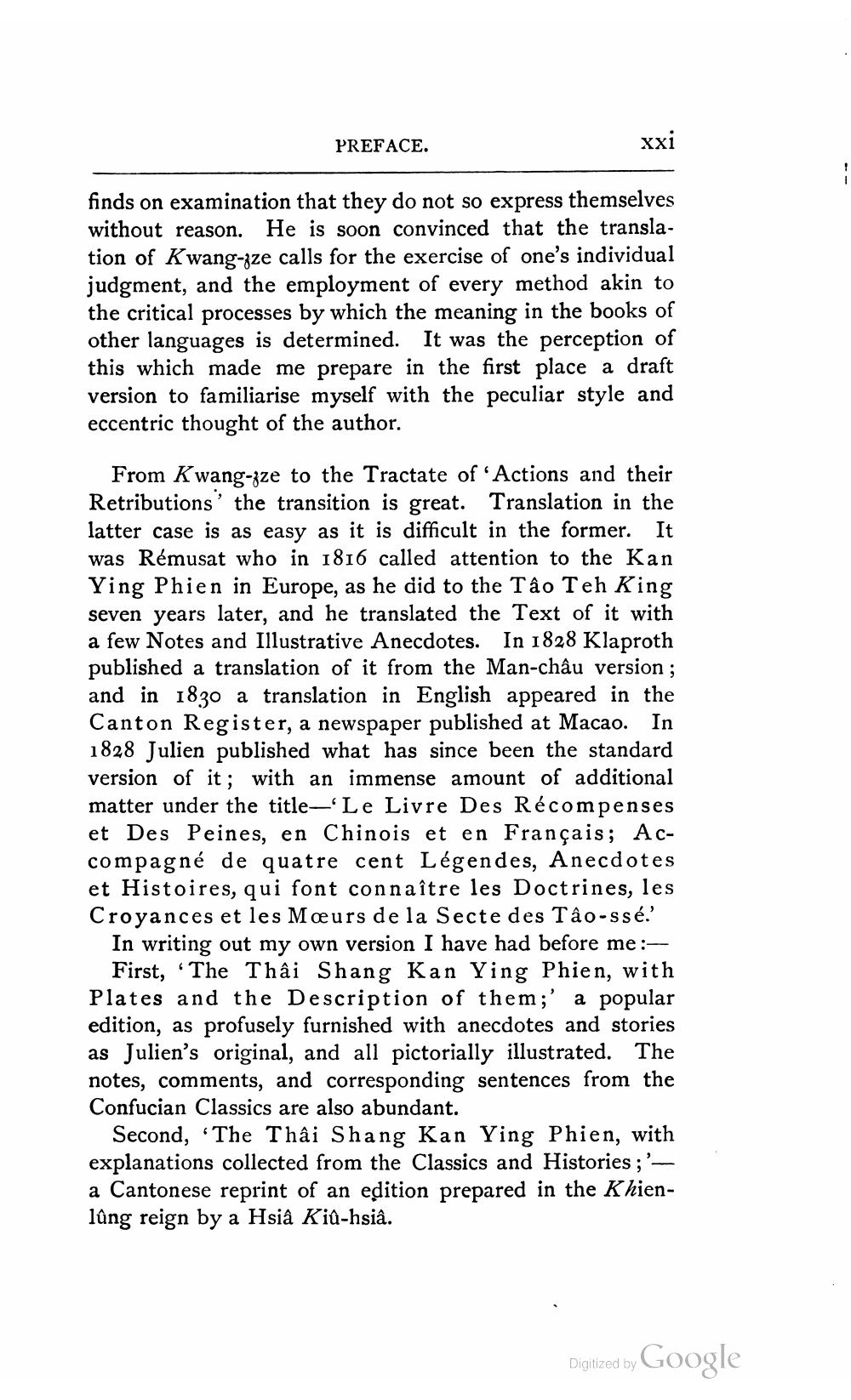________________
PREFACE.
xxi
finds on examination that they do not so express themselves without reason. He is soon convinced that the translation of Kwang-zze calls for the exercise of one's individual judgment, and the employment of every method akin to the critical processes by which the meaning in the books of other languages is determined. It was the perception of this which made me prepare in the first place a draft version to familiarise myself with the peculiar style and eccentric thought of the author.
From Kwang-zze to the Tractate of Actions and their Retributions' the transition is great. Translation in the latter case is as easy as it is difficult in the former. It was Rémusat who in 1816 called attention to the Kan Ying Phien in Europe, as he did to the Tâo Teh King seven years later, and he translated the Text of it with a few Notes and Illustrative Anecdotes. In 1828 Klaproth published a translation of it from the Man-châu version; and in 1830 a translation in English appeared in the Canton Register, a newspaper published at Macao. In 1828 Julien published what has since been the standard version of it; with an immense amount of additional matter under the title_'Le Livre Des Récompenses et Des Peines, en Chinois et en Français; ACcompagné de quatre cent Légendes, Anecdotes et Histoires, qui font connaître les Doctrines, les Croyances et les Meurs de la Secte des Tâo-ssé.'
In writing out my own version I have had before me :
First, 'The Thai Shang Kan Ying Phien, with Plates and the Description of them;' a popular edition, as profusely furnished with anecdotes and stories as Julien's original, and all pictorially illustrated. The notes, comments, and corresponding sentences from the Confucian Classics are also abundant.
Second, "The Thâi Shang Kan Ying Phien, with explanations collected from the Classics and Histories;'a Cantonese reprint of an edition prepared in the Khienlớng reign by a Hsiâ Kill-hsiâ.
Digitized by
Digitized by Google




